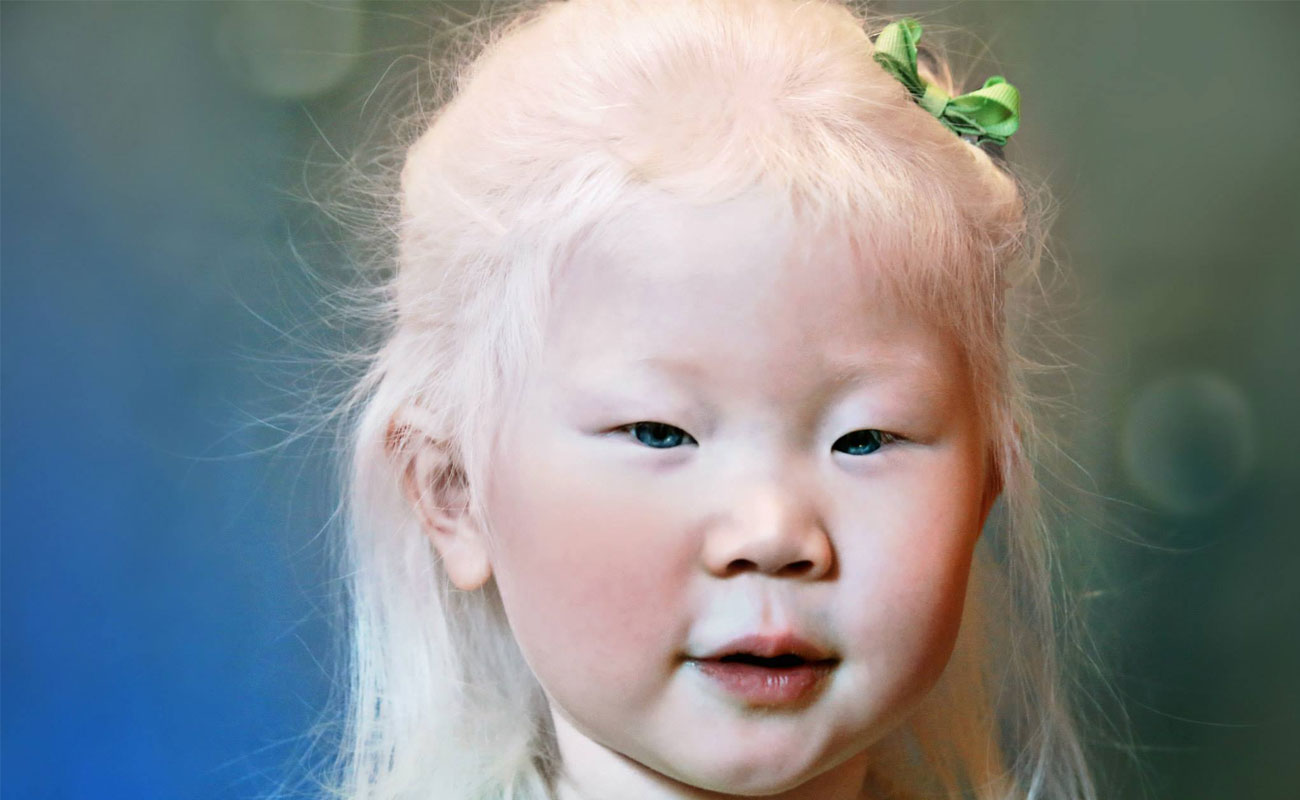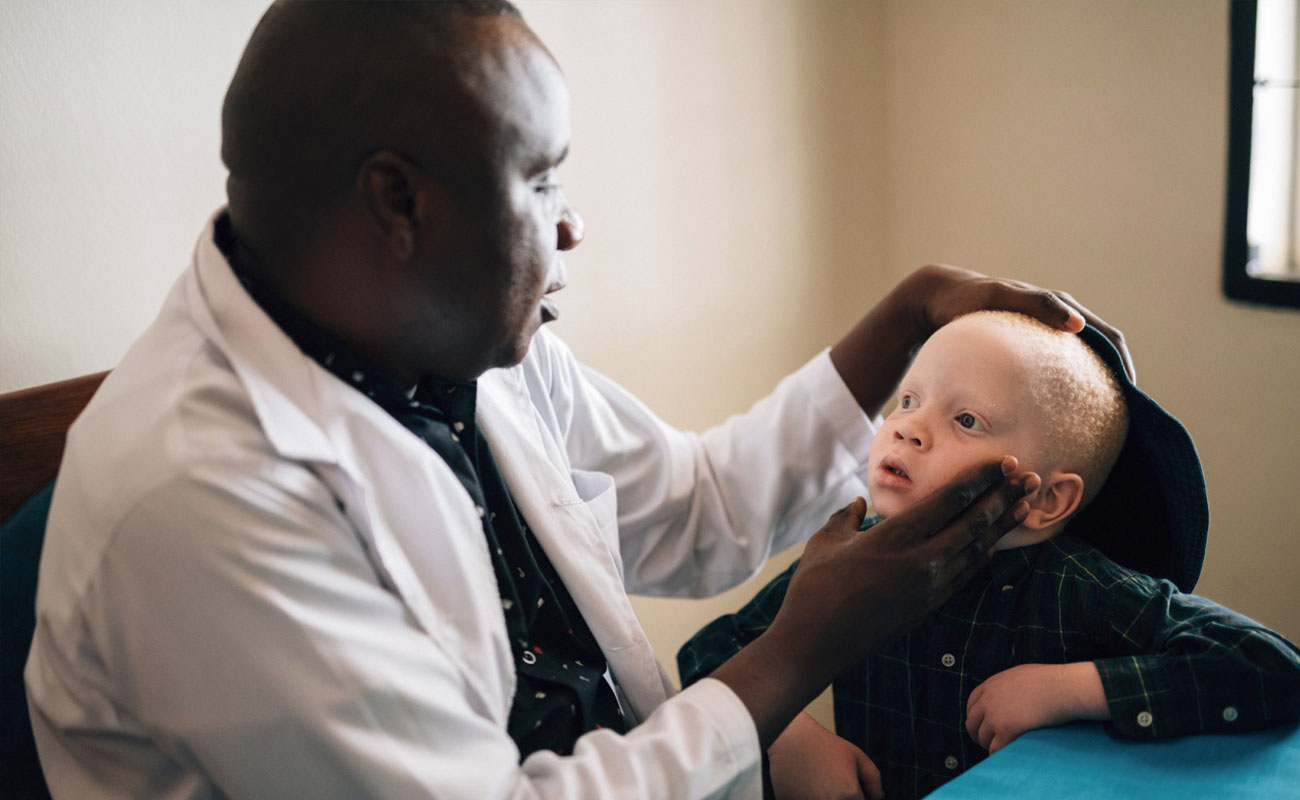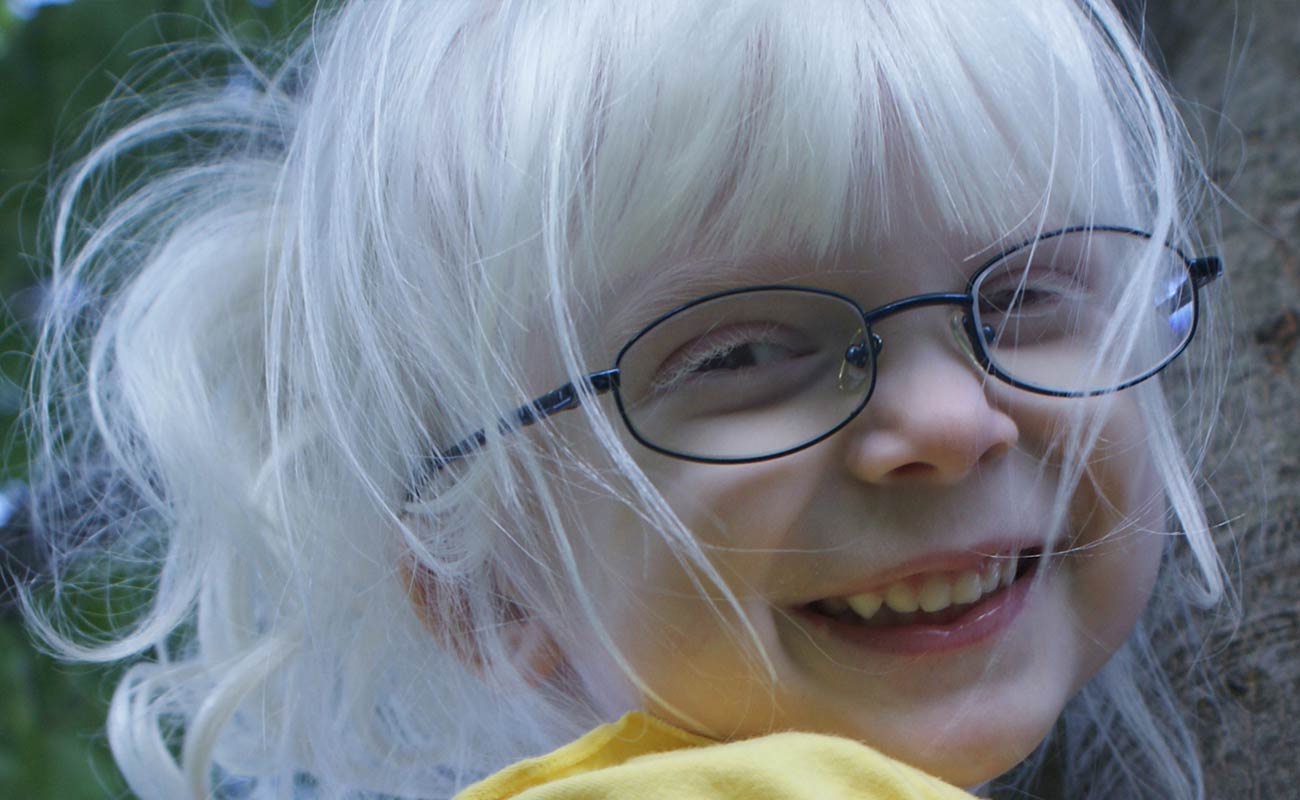
Albinism is the condition that affects the melanin production. Melanin is a pigment that colors skin, hair and eyes.
People with albinism generally have little or no melanin at all, which causes some certain characteristic signs and symptoms that are most of the time noticeable from birth.
Considering the quantity of melanin produced, the person may have very pale hair, skin and eyes. However there are some people with albinism that have brown or carroty hair and their skin can be tanned.
Those with albinism may also have some eye conditions, including:
• Difficulties with eyesight (Although it may be eased by wearing glasses, most of the time the vision will not be fully corrected).
• photophobia (sensitivity to light)
• nystagmus (arbitrary eye movements)

Symptoms of albinism are, most of the time, obvious in an individual's skin, hair and eye color. Nonetheless, all of the individuals with albinism condition have vision problems.
While the most identifiable form of albinism leads to very pale skin and snowy white hair, skin coloring (called pigmentation) may vary from white to brown, and might be almost the same as that of parents or siblings who don’t have albinism.
For some of those with albinism, skin coloring never changes. For some others, melanin production may start or rise in childhood and the teen years, which leads to occurrence of minor changes in the skin coloring (pigmentation). Exposure to the sun in some people could result in:
• Freckles
• Lentigines (large spots that look like freckle)
• Moles without pigment or colored pink
• Tanned skin
Hair color in these individuals from very white to brown as well. Those with albinism that have African or Asian descent may develop hair color that is yellow, ginger, reddish or brown. The color of hair may darken later in early adulthood.
Eye color
Eye color may vary from very light blue to brown. The eye color might change with age.
Due to the absence of pigment in the irises (colored part of the eyes), they are to some extent translucent. It means that the irises cannot create a full blockage of light from entering the eye. Therefore, very light-colored eyes can seem red in lighting. This happened due to the fact that you see light that’s reflected off the back of the eye and is passed back out again through the iris (which is like the red-eye that happens in flash photos.
Signs and indications of albinism associated with eye functioning include:
• Nystagmus (Quick and arbitrary back-and-forth movement of the eyes)
• Strabismus ( lack of ability of both eyes to remain directed at the same point or even to move harmonically)
• Nearsightedness or farsightedness in an extreme way
• Photophobia (sensitivity to light)
• Astigmatism (abnormal curvature of the front surface of the eye or the lens inside the eye which is the reason behind blurred vision)
Albinism occurs as the result of mutation in one of many genes. These genes are, infact, responsible for many different aspects of melanin production of by melanocytes located in the skin and eyes.
Often, the mutations may interfere with the enzyme tyrosinase (tyrosine 3-monooxygenase). The enzyme synthesizes melanin from the amino acid tyrosine.
The production of melanin could be slowed or even stopped. It greatly depends on the mutation. However, when it comes to albinism, no matter how or how much the interference with the production of melanin happens, always some problems come up with the visual system.
These vision issues happen due to melanin's essential role in the growth of the retina and the optic nerve pathways from the eye to the brain.
Types of albinism
Albinism is divided into some subtypes. The division has to do with the specific gene that is affected. The subtypes are as follows:
• Oculocutaneous albinism (OCA)
It is created by a mutation in 1 of 4 genes. Depending on the mutations, OCA is itself divided into seven types. These types of OCA are:
o OCA type 1: people are inclined to have milky skin, white snowy hair, and blue eyes. With an increase in age, some of individuals may experience darken skin and hair.
o OCA type 2: just like type 1. Only often happens among African-Americans, sub-Saharan Africans, and Native Americans.
o OCA type 3: most often than not happens among South Africans with black skin.
o OCA type 4: mostly happens among East Asian populations.
• X-linked ocular albinism: generally happening to men, X-linked ocular albinism caused by a mutation of the X chromosome. There are still vision problems. However, the color of eye, hair, and skin are almost in the normal range.
• Hermansky-Pudlak syndrome: this sporadic anomaly is most prevalent in Puerto Rico. Although its signs and symptoms are resembling oculocutaneous albinism, patients are more prone to heart, kidney, bowel, and lung illnesses or bleeding disorders, like hemophilia.
• Chediak-Higashi syndrome: a rare form of albinism, caused by a mutation in the CHS1/LYST genes. Symptoms of this type are like those of oculocutaneous albinism but in this condition hair may seem silvery and skin could look to some extent gray. Since these individuals have some defects and problems in their white blood cells, occurring infections is more common among them.

A complete procedure for diagnosing albinism consist of:
• An analysis of changes occurred in pigmentation
• A physical examination
• A comprehensive eye examination
• Comparing the child's pigmentation to that of other family members
An ophthalmologist should perform the child's eye examination. This examination consists of a careful evaluation of potential nystagmus, photophobia, and strabismus. The medical professional uses a tool to inspect the retina and determine as well in order to find out whether there are signs and symptoms of anomaly. With a simple test the doctor can measure the brain waves created when light or a reversing pattern is flashed into each eye. This exam can show if there is a misdirected optical nerve.
If only one of the child’s eye is defected with problem such as nystagmus, it might be due to another condition. Also, some disorders other than albinism may affect skin pigmentation. However, the other condition do not cause all the visual problems associated with albinism.

Albinism itself does not have any cure or treatment. However, its related skin and eye problems often have.
A child diagnosed with albinism often needs regular eye exams. Most of the time the children affected with Albinism are prescribed to wear glasses or contact lenses in order to correct vision problems like long-sightedness, short-sightedness, or astigmatism.
All those diagnosed with albinism, should be extra careful in the sun. Without melanin, ultraviolet (UV) rays of the sun may simply damage the skin (sunburn) of those whose skin do not have melanin. This, in fact, increases the risk of skin cancer.
Submit Comment